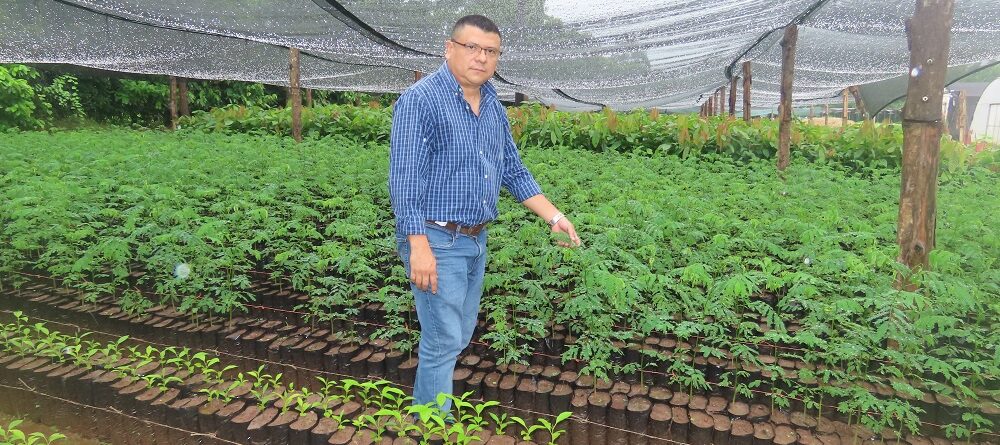Treevive facilitates climate finance for forest conservation and restoration by developing investment-ready forest carbon projects. We would like to highlight one of our projects: MLR Forestal in Nicaragua. Situated in the Northern Caribbean regions of Siuna and Bonanza in Nicaragua, within the buffer zone of the Bosawás Biosphere Reserve, MLR Forestal’s project is a comprehensive effort to restore degraded lands through innovative agroforestry. Spanning 4,204 hectares, this project combines commercial forestry and agroforestry systems, focusing on teak and cocoa. It’s a model of sustainable land management that not only rehabilitates the environment but also promotes economic development in the region. The project aims to expand to a total Verified Carbon Standard (VCS) area by 2030. Of the total area, 2,567 hectares are dedicated to commercial plantations while 1,456 hectares are restored to natural forest.
A personal perspective: Luis Lopez
We spoke with Luis Lopez, Sustainable Development Manager at MLR Forestal, to learn more about the project. “My name is Luis Lopez, and I’ve been working with MLR Forestal in Nicaragua since 2010. We reforest the Northern Caribbean regions of Siuna and Bonanza, part of the BOSAWAS Biosphere Reserve. Our mission is to restore this deforested land using teak and cacao.” Luis explained the innovative methods used in the project. “We pair cacao with teak, using the trees to shade the cacao plants. This benefits the environment and offers quicker economic returns. We employ about 700 people annually, focusing on quality, permanent jobs and improving worker living conditions.”
The project’s commitment to sustainability is underscored by FSC certification and Rainforest Alliance certification, which ensure economic viability, environmental sustainability, and social responsibility.
Community engagement and education
A cornerstone of MLR Forestal’s approach is community involvement. “If you ask me what the most tangible contribution is, I see it in environmental education. We engage with the communities, teaching them to care for their environment, and work closely with local schools through ‘green classroom’ exercises. The most important aspect of my work is to raise awareness through environmental education and to improve the quality of the sites. I do want the trees to grow, not just to capture carbon, but because they genuinely improve the condition of the sites, for the movement of species, for the climate. Global warming is a reality.”
The project has made significant steps in fostering environmental awareness and involvement among local communities.
Facts about the project:
- Largest nursery in the North Caribbean: MLR Forestal can produce up to 500,000 plants per year.
- Biodiversity conservation: 28% of the total area is designated for the protection and conservation of biodiversity.
- Robust biodiversity monitoring: By the end of 2023, 973 species had been identified, with active restoration efforts planting native species to accelerate ecosystem recovery.
- Community relations: Strong policies ensure fair employment and collaboration with local and indigenous communities, maintaining good, respectful relationships with neighboring communities and the Mayangna communities near the farms in Bonanza.
Learn more about MLR Forestal on their website, and the Treevive website.


